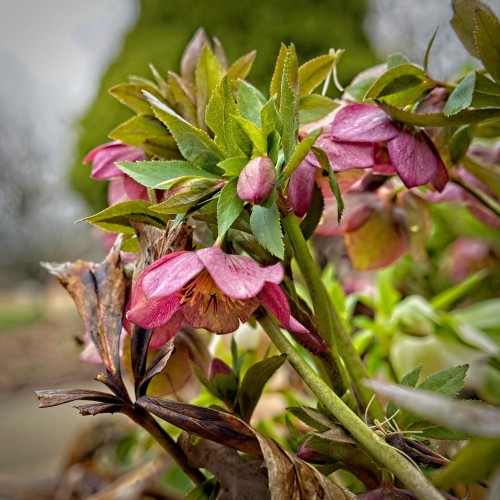
hellebore
Helleborus hybridus 'Red Lady'
Cycle:
Herbaceous Perennial
Watering:
Average
Hardiness Zone:
4 - 9
Flowers:
Flowers
Sun:
Part shade,full shade
Leaf:
Yes
Growth Rate:
Low
Maintenance:
Low
Drought Tolerant:
Yes
Salt Tolerant:
Yes
Care Level:
Medium
watering
Hellebore (Helleborus hybridus 'Red Lady') should be watered when the soil is just beginning to feel dry to the touch. To keep the soil consistently moist, water the plant every 2-3 days when the weather is warm, every 3-4 days when it is cool, and every 4-6 days in the winter. Do not water too often, as this will cause root rot. Be sure to check the soil regularly, as over-watering can be very detrimental to the plant.
sunlight
Hellebore (Helleborus hybridus 'Red Lady') prefers full sun to partial shade, and does best when it gets some sunlight every day. Early morning sunlight is best, as this helps to dry out the morning dew and prevent diseases. It’s also important to note that afternoon sun can be too intense for this plant species, so be sure to give it some shade during the hottest part of the day (noon to 4 PM). Four to 6 hours of direct sunlight is ideal for this type of hellebore.
pruning
Hellebore hybrids such as 'Red Lady' should be pruned once a year in late winter. It is best to begin after flowering and just before new shoots begin to emerge. Start by removing any dead, diseased, or damaged stems and foliage. Then, selectively remove up to 1-third of the oldest, woodiest stems very close to the base of the plant so that the overall shape is maintained. When finished, spread a layer of mulch around the base of the plant to protect the roots and help retain moisture.
